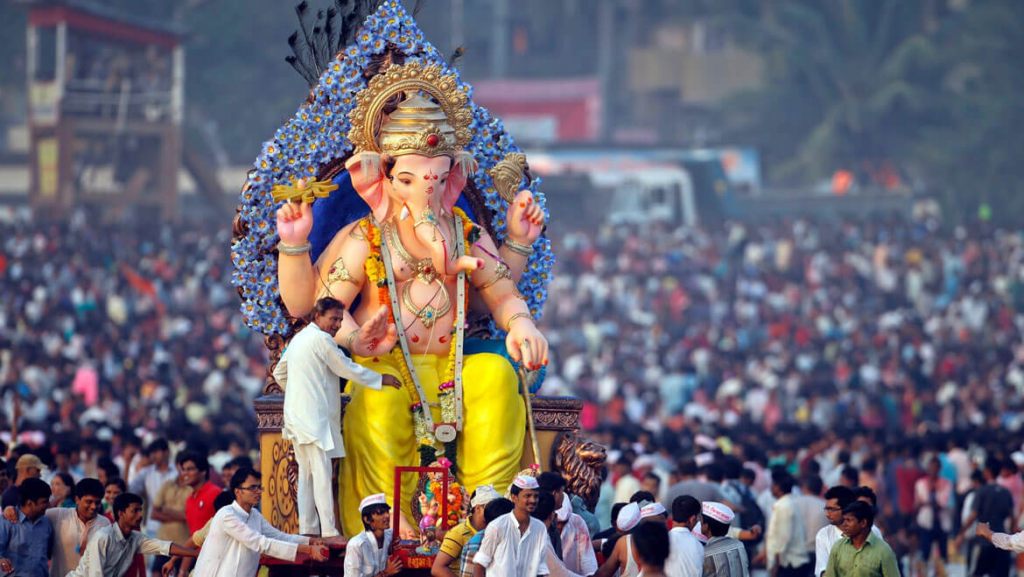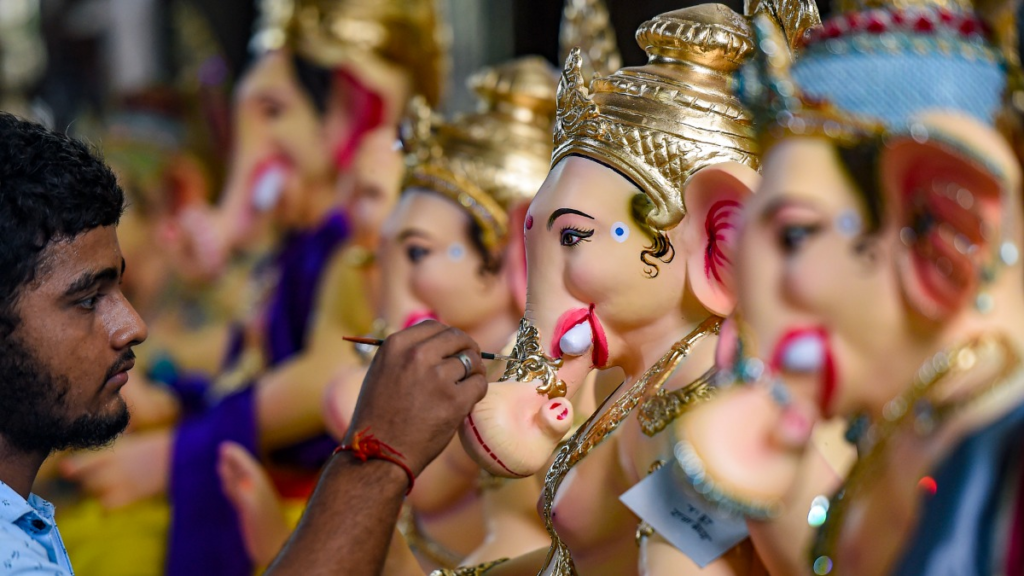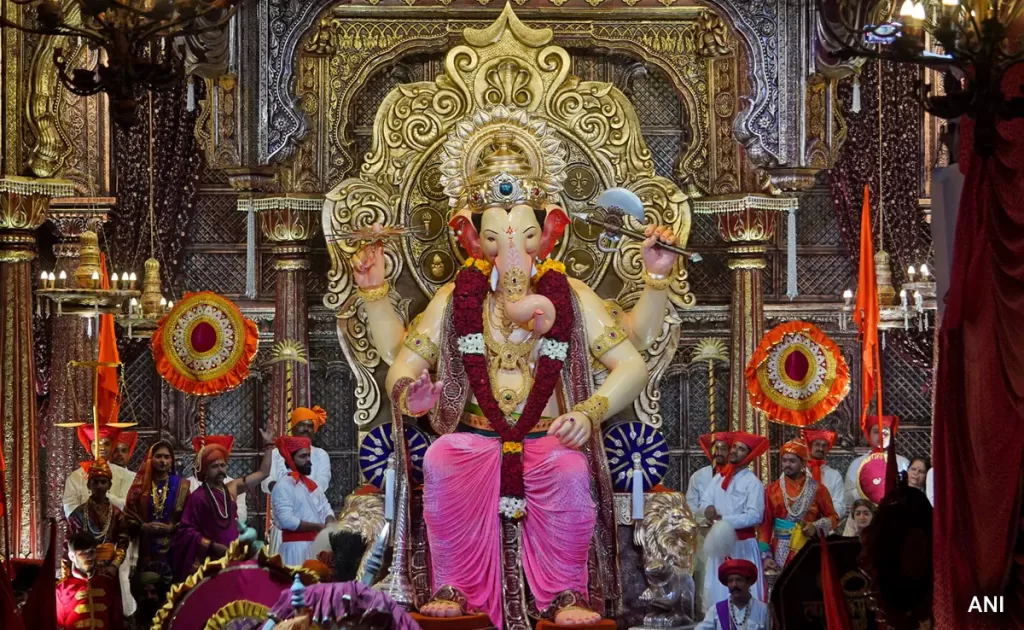Introduction:
Ganesh Utsav, also known as Ganesh Chaturthi, is one of India’s most cherished and widely celebrated festivals. It’s a time when people come together to worship Lord Ganesha, the elephant-headed God of wisdom, prosperity, and good fortune. But have you ever wondered about the historical roots of this vibrant festival? In this blog post, we’ll take you on a journey through time to explore the fascinating history of Ganesh Utsav.

Ancient Origins:
The history of Ganesh Utsav can be traced back to ancient India. Lord Ganesha, the son of Lord Shiva and Goddess Parvati, has a rich mythological background. According to Hindu mythology, Parvati creates Ganesha and was blessed with extraordinary powers and wisdom. His unique appearance, with an elephant head and a human body, symbolizes the merging of divine and earthly attributes.
Ganesha’s Popularity Grows:
Chhatrapati Shivaji Maharaj in the 17th century played a pivotal role in transforming Ganesh Utsav into a more public and community-oriented celebration, although Lord Ganesha had been revered in Hinduism for centuries. The Maratha king, known for his devotion to Lord Ganesha, initiated the public celebration of Ganesh Chaturthi to promote a sense of unity and patriotism among his subjects.
The Freedom Struggle Connection:
During the British colonial rule in India, Ganesh Utsav gained even more significance. Freedom fighters like Lokmanya Tilak recognized its potential as a platform to bring people together for a common cause. In the late 19th century, Tilak transformed Ganesh Utsav into a mass movement, using it as a means to foster unity and instill a sense of patriotism among Indians. The festival became a vehicle for political expression and social reform.

Post-Independence Era:
After India gained independence in 1947, Ganesh Utsav continued to thrive as a symbol of cultural and religious diversity. It transcended regional boundaries and became a national celebration, with people from all walks of life participating in the festivities. Today, it is celebrated not only in India but also by Indian communities around the world.
Modern Celebration:
In contemporary times, Ganesh Utsav has evolved into a grand spectacle. The festival typically lasts for ten days, with elaborate decorations, processions, music, dance, and community gatherings. Devotees create beautifully crafted clay idols of Lord Ganesha and install them in their homes or public pandals (temporary structures). Devotees worship the idols with great devotion, and on the final day, they immerse them in water, symbolizing Lord Ganesha’s return to his celestial abode.
Ganesh Utsav, also known as Ganesh Chaturthi, holds a special place in the hearts of the people of Maharashtra. The state celebrates this vibrant and grand festival with unparalleled fervor and devotion, making it one of the most anticipated events of the year. Let’s delve into the unique aspects of Ganesh Utsav in Maharashtra and how it brings people together in a spirit of unity and celebration.
Preparation and Planning:
Months before the festival, the preparations kick off with immense enthusiasm. Families, neighborhoods and communities come together to plan the installation of Lord Ganesha’s idol. The idol-making process is a skilled art, with skilled artisans crafting intricate idols of various sizes.

Community Bonding:
Ganesh Utsav is not just a religious festival; it’s a celebration of community and togetherness. Neighborhoods and housing societies organize meetings to discuss the festival’s arrangements, including themes, decorations, cultural events, and fund collection. This collaborative effort fosters a sense of unity and camaraderie among residents.
Aesthetic Pandals:
One of the highlights of Ganesh Utsav in Maharashtra is the creative and elaborate pandals. These temporary structures are adorned with colorful decorations, lighting and artistic designs. Many pandals follow a specific theme, which could range from historical events to social issues or mythological stories. People from all walks of life visit these pandals to admire the artistry and pay their respects to Lord Ganesha.
Ganesh Aarti and Bhajans:
Throughout the ten-day festival, devotees gather at the pandals to participate in Ganesh aartis (prayer ceremonies) and sing bhajans (devotional songs). These spiritual activities create a serene and uplifting atmosphere, where the faithful come to seek the blessings of Lord Ganesha and offer their prayers.
Visarjan (Immersion) Procession:
Devotees mark the culmination of Ganesh Utsav by immersing Lord Ganesha’s idol in a water body, symbolizing his return to the divine abode. The procession is a grand spectacle, with thousands of devotees accompanying the idols to rivers, lakes, or the sea. The atmosphere is electric, with drum beats, traditional music, and dancing creating an unforgettable experience.
Social and Cultural Impact:
Beyond its religious significance, Ganesh Utsav has a profound social and cultural impact in Maharashtra. It serves as a platform for artists, musicians, and performers to showcase their talents through various cultural events and competitions. Additionally, it promotes environmental awareness, with efforts to make the festival more eco-friendly by using clay idols and minimizing pollution during immersion.
Conclusion: Ganesh Utsav is not just a religious festival; it’s a celebration of India’s rich cultural heritage, its historical struggles, and its enduring spirit of unity. From its ancient origins to its role in the fight for independence and its modern-day grandeur, the history of Ganesh Utsav is a testament to the power of faith and community. As we celebrate this remarkable festival year after year, let us not forget the historical significance that makes it so much more than just a religious observance. Ganesh Utsav is a symbol of India’s past, present, and future, and it continues to inspire millions across the globe.

